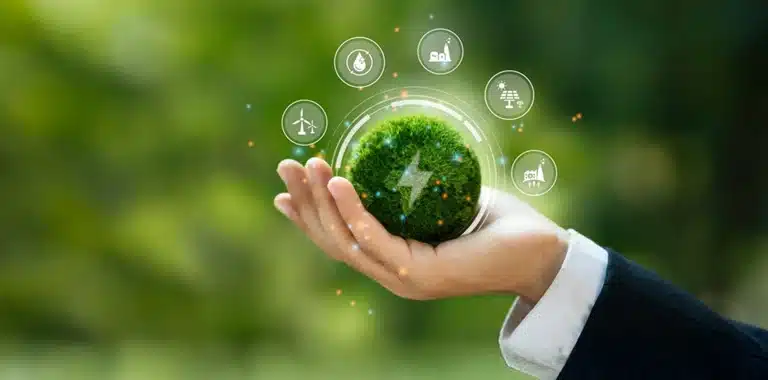Dubai Electricity and Water Authority (DEWA) stands today as a beacon of innovation, sustainability, and clean energy — but DEWA’s growth began humbly with just 21 electricity connections and water supply to only 49 residents.
Over decades, DEWA has evolved into one of the world’s most advanced utility providers, central to Dubai’s transformation from a desert settlement into a smart global city. With a clear vision aligned with Dubai clean energy goals, DEWA has fueled progress across energy, water, and digital infrastructure — while setting global benchmarks in efficiency and sustainability.
Humble Beginnings of DEWA’s Growth
DEWA’s growth story is interwoven with Dubai’s own meteoric rise. The foundation of modern utilities in Dubai was laid in the late 1950s under the visionary leadership of the late Sheikh Rashid bin Saeed Al Maktoum.
In 1959, the Dubai Electricity Company and Dubai Water Department were established to serve around 7,000 households. Just two years later, in 1961, the Dubai Electricity Company activated its first 21 electricity connections using four diesel generators, each producing 360 kilowatts.
Electricity demand surged rapidly as Dubai’s population and economy expanded. By 1972, demand had skyrocketed to 42 megawatts (MW), spurring the construction of major infrastructure such as the C Station and the Jebel Ali-based D Station.
On the water side, the Dubai Water Department initially tapped underground water reserves. By 1961, only 49 residents were connected to the water network. However, as the city’s thirst grew, Dubai pioneered the development of desalination plants — beginning in 1979 — to ensure a steady water supply.
Formation of DEWA: A Turning Point
A historic moment in DEWA’s growth came on January 1, 1992. A royal decree by the late Sheikh Maktoum bin Rashid Al Maktoum merged the Dubai Electricity Company and Dubai Water Department to form the Dubai Electricity and Water Authority (DEWA).
Since its inception, DEWA has expanded exponentially to meet the needs of a booming population. Today, Dubai is home to over 3.6 million residents, with a daytime population of nearly 4.8 million — and DEWA reliably powers them all.
DEWA’s total production capacity currently stands at an impressive 17,179MW of electricity and 495 million imperial gallons of desalinated water per day. Moreover, DEWA boasts some of the world’s lowest customer minutes lost (CML) in electricity outages — just 0.94 minutes in 2024, outperforming both EU and US utilities.
DEWA’s Growth in Clean Energy and Sustainability
Clean energy has become the cornerstone of DEWA’s growth strategy. Aligned with the Dubai Clean Energy Strategy 2050 and the Dubai Net Zero Carbon Emissions Strategy 2050, DEWA aims to provide 100% of Dubai’s power from clean energy sources by mid-century.
Under the leadership of Saeed Mohammed Al Tayer, MD and CEO of DEWA, the authority is spearheading iconic projects to secure Dubai’s clean energy future:
-
Mohammed bin Rashid Al Maktoum Solar Park: The largest single-site solar park in the world, with a planned capacity of 5,000MW by 2030.
-
Hatta Hydroelectric Plant: The first pumped-storage hydroelectric power station in the GCC, using water stored in the Hatta Dam.
-
Green Hydrogen Project: The first of its kind in the MENA region, producing hydrogen using solar power.
“DEWA’s growth is pivotal to Dubai’s development. We strive to realise the ambitious goals set by the late Sheikh Rashid bin Saeed Al Maktoum, and carried forward under the wise leadership of His Highness Sheikh Mohammed bin Rashid Al Maktoum,”
— Saeed Mohammed Al Tayer, MD & CEO of DEWA
DEWA’s Growth in Technology and Smart City Integration
Beyond clean energy, DEWA’s growth has driven Dubai’s emergence as a smart city leader. The utility has embraced cutting-edge technologies, including artificial intelligence, IoT, and blockchain, to enhance services and efficiency. Key innovations include:
-
Smart Grids: Enabling real-time monitoring and management of electricity networks for optimal reliability.
-
Smart Meters: Over 2 million smart meters installed across Dubai, empowering consumers to monitor and reduce their energy use.
-
Moro Data Hub: DEWA’s fully integrated digital cloud services provider, supporting Dubai’s digital economy.
These advancements align with the Dubai 10X initiative, which positions Dubai 10 years ahead of other global cities in innovation and smart governance.
Milestones Defining DEWA’s Growth
| Milestone | Achievement |
|---|---|
| 1959 | Dubai Electricity Company & Water Department established |
| 1961 | First 21 electricity connections & 49 water connections |
| 1972 | Electricity demand hits 42MW |
| 1979 | First desalination plant launched |
| 1992 | DEWA formed by royal decree |
| 2024 | 17,179MW electricity & 495 MIGD water capacity |
| 2030 | 5,000MW solar park target (ongoing) |
| 2050 | 100% clean energy goal |
DEWA’s Commitment to Dubai’s Net Zero Strategy
As Dubai strives to achieve net-zero carbon emissions by 2050, DEWA’s growth will remain instrumental. By advancing clean energy, sustainable water solutions, and smart technologies, DEWA is charting a resilient future.
Whether through large-scale renewable projects or grassroots conservation campaigns, DEWA empowers businesses and residents alike to contribute to a greener Dubai.
Looking Ahead: The Future of DEWA’s Growth
With an unwavering commitment to innovation and sustainability, DEWA’s growth trajectory remains aligned with Dubai’s ambitions to be the world’s smartest and most sustainable city. The authority’s future plans include:
-
Expanding renewable energy capacity
-
Integrating advanced AI for predictive maintenance and grid optimization
-
Supporting green hydrogen as a future fuel source
-
Enhancing customer services through digital transformation
Conclusion
DEWA’s growth — from serving 21 homes to millions — mirrors Dubai’s extraordinary journey. As the emirate pushes toward its clean energy and smart city goals, DEWA stands ready to power the next era of progress, sustainability, and global leadership.

